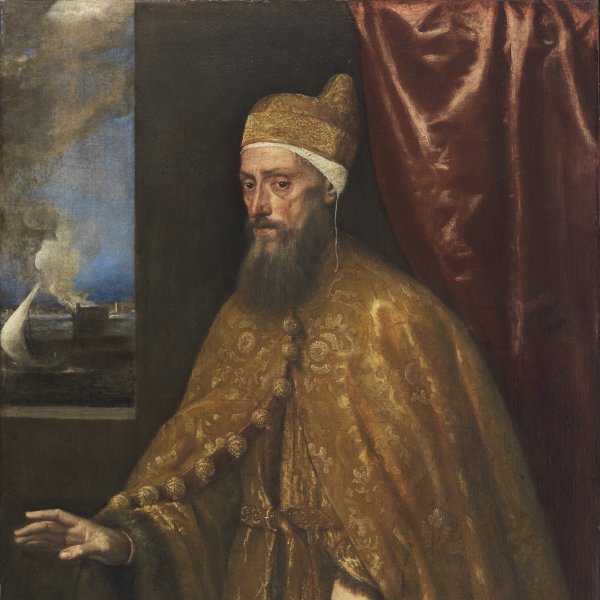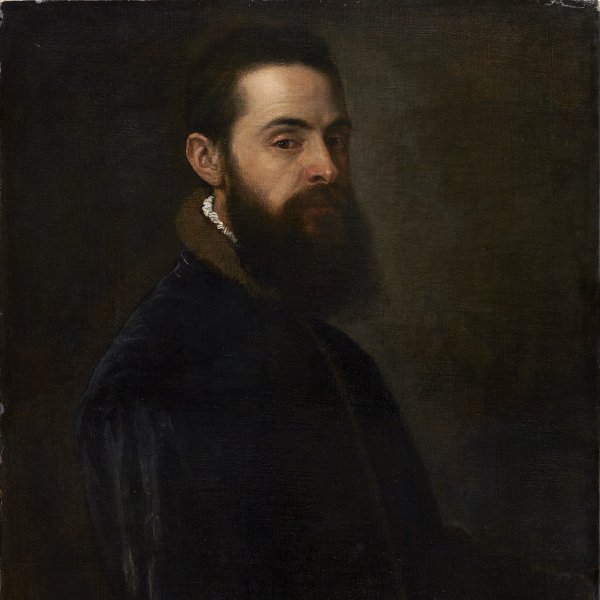Portrait of a Nobleman of the Capponi Family
Ridolfo Ghirlandaio was the son of Domenico. On the death of his father, from whom he may have learned the rudiments of painting, he continued his studies in the family workshop with his uncle Davide. During the course of his lengthy career Ridolfo produced both frescoes and easel paintings on religious subjects as well as decorative designs for some of the celebrations and other events that took place in Florence. Nonetheless, his most important contribution was in the genre of portraiture. His compositions combine elements from artists such as Fra Bartolommeo, Piero di Cosimo, Raphael and Leonardo, influences that he gradually added to his own style and which had more or less importance depending on the various phases of his artistic evolution. One of Ghirlandaio’s most important works is the San Zenobio Altarpiece of 1517, particularly two scenes of the miracle of the saint and the transportation of his body, both set in Florence. Also significant are the fresco for the cappella dei Papi in Santa Maria Novella of 1515 and the grotesques that adorn the Camera verde in the Palazzo Vecchio of 1542.
Vasari referred to Ghirlandaio in his Lives and associated him with two great 16th-century artists. One of these references links him with Raphael, with whom Ghirlandaio seems to have made friends when the young Raphael arrived in Florence. The second reference relates to Michelangelo and the design for The Battle of Cascina, and Vasari mentions Ghirlandaio as one of the group of artists who studied and copied that work.
Portrait of a Nobleman of the Capponi Family entered the Thyssen-Bornemisza collection in 1977, prior to which it was in a private Italian collection. The painting was initially attributed to Bronzino on the suggestion of Giuliano Briganti until 1980 when Alan Salz proposed that it was by Ghirlandaio. The panel has consequently been catalogued as by Ghirlandaio since 1986, the date of Gertrude Borghero’s catalogue of the Thyssen-Bornemisza collection at Villa Favorita.
This unidentified member of the Capponi family is depicted half-length against a background of subtly graduated mauve tones. Presented seated, he supports his left elbow on the arm of a chair of which only the tip of the outside edge is visible at the bottom of the composition. His corpulent body completely fills the surface, which is principally occupied by the large, dark, modelled area of the clothes. The sitter’s face, framed by his cap, is rigorously and realistically rendered, reflecting one of Ghirlandaio’s most outstanding characteristics, particularly evident in details such as the double chin and the bags beneath the eyes. This realistic rendering is also evident in the plump, fleshy hands, which are small in relation to the overall size of the figure. The portrait has been dated to the last phase of Ghirlandaio’s career.
Mar Borobia









